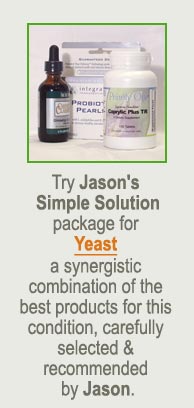WESTERN INTERPRETATION AND TREATMENT
Yeast live normally (and happily) in the vagina, but infections emotional or physical stress, and use of antibiotics can deplete friendly bacteria that control the yeast, creating an imbalance of pH levels and contributing to chronic yeast infections. Diagnosis is confirmed microscopically in the laboratory. Yeast infections are treated topically with prescription or over-the-counter anti-yeast medications; in extreme cases, stronger prescription drugs are used.
FIVE ELEMENT HEALING INTERPRETATION
The Chinese view yeast infections as either chronic or acute, and either hot or cold:
- Hot/acute is sudden onset, with more dramatic, acute symptoms, such as intense itching, burning, and thick yellow discharge.
- Cold/acute is sudden onset with intense itching but less burning and a profuse white discharge. Over time, these acute symptoms can become more chronic and insidious, leading to
- Hot/chronic, which is similar to the hot/acute condition but with less-dramatic symptoms, or
- Cold/chronic, which is similar to cold/acute but with less-dramatic symptoms. With both chronic conditions, deficiency symptoms such as lethargy, fatigue, and sluggishness often occur.
COMPLEMENTARY TREATMENTS
 SUPPLEMENTS
SUPPLEMENTS
- The friendly bacteria Acidophilus, which helps to reinstate a healthy bacterial environment in the digestive system, is available in two common forms: Lactobacillus acidophilus and Lactobacillus bifidus. I have a slight preference for the bifidus variety, which works quickly and efficiently to stem the proliferation of yeast. Tablets or liquids are usually taken with each meal; follow directions on the product label.
- Caprylic acid is an anti-fungal fatty acid preferred by many doctors because of its gentleness and effectiveness over the prescription drug Nystatin for the control of Candida Albicans.
- Yeast-free multivitamin and mineral tablets (Dosages for these and other recommended supplements may vary cording to the product; when amounts aren’t clearly specified, ask ‘I professional for advice.)
TOPICAL STRATEGIES
- Avoid pantyhose, tight clothing, and tampons.
- Try a yogurt vaginal rinse to help re-balance the vaginal pH levels.
- Use plain yogurt (no sugar or flavorings). Place in the vagina with a vaginal (spermicide) applicator; repeat every other day until symptoms abate. To absorb the leakage, use a sanitary napkin or a tampon. Combine the rinse with one of the following methods:
- Australian tea tree oil vaginal rinse (Mix the oil with water according to instructions on package; dip a tampon into the mixture and insert vaginally; remove after one hour.)
- Garlic suppository (Wrap a peeled clove in gauze, insert vaginally, and leave overnight.)
- Boric acid suppository (Insert vaginally. Capsules are available in health food stores, or ask your pharmacy to make this for you, using 600 mg boric acid powder in “0” gelatin capsules.)
 DIET
DIET
Avoid yeasty or moldy foods such as cheese, dried fruits, peanuts, alcohol, milk and dairy products (except for nonfat yogurt). Avoid whenever possible antibiotics, birth-control pills, and steroids.
HERBAL ALLIES
Each of the following herbs can be beneficial. Combined in equal pares, they make a wonderfully effective tonic:
- Echinacea (Echinacea angustifolia or Echinacea purpura): This Native American tonic was adopted by European settlers and is now used worldwide. It is renowned for its immune-enhancing antibiotic and antimicrobial actions.
- Lady’s Mantle (Alchemilla vulgaris), Lady’s mantle has a long history as a sacred, magical herb; in ancient times alchemists would gather the dew that collected on the plant’s foliage and use it to enhance the potency of their formulas. The principal quality of this herb is its astringency, which makes it the perfect antidote to heavy menstrual flow, breakthrough bleeding, or heavy discharges (leukorrhea). Lady’s mantle also increases the blood supply to the reproductive organs, stimulating menstruation and supporting a balanced menstrual flow. Its proven anti-inflammatory properties confirm its historical role as an effective healing agent for wounds.
- Pau d’arco (Tabecuia lmpetiginosa), is a South American herb, where its bark has been used for centuries to treat a wide range of conditions. It has traditionally been used as a lung tonic and expectorant helping to rid the body of excess mucus and eliminate toxins.
It has been much studied for its immune enhancing and anti-cancer qualities but in the West it is best known for its anti-fungal actions particularly the treatment of yeast infections (candida albicans). It can be used both topically and as a tonic. Studies have shown that lapachol, the main constituent of Pau d’arco has very strong anti-fungal activity. (Although lapachol, isolated from the whole bark, has been shown when used in large quantities to have some toxicity, the whole plant has been used without side-effect for centuries. If gastrointestinal symptoms occur, discontinue use.)
COMPLEMENTARY HERBAL FORMULATIONS
(Traditionally, in both Western and Chinese cultures, the combining of herbs is of superior value than the individual parts. After over thirty years as an herbalist, the synergy of certain herbs became apparent and this understanding has been used to create our own Integral Health Apothecary formulas. We are also listing tradition Chinese herbal tonics which exemplify this synergy.)
- Ginseng & Astragalus the classic whole body/mind general energy and digestive tonic. Used traditionally for lethargy, low energy, foggy thinking, reduced libido and digestive sluggishness, it’s particularly effective for creating a healthy internal environment, naturally resistant to yeast.
CHINESE PATENT REMEDIES
- Lung Dan Xie Gao Wan (Gentiana Purge Liver Pills) for hot (acute or chronic) conditions with itchy discharges that have a burning quality
ACUPOINTS
- Spleen 6,
- Spleen 9,
- Kidney 3,
- Kidney 7,
- Conception Vessel 4
MIND/BODY/SPIRIT CONNECTION
 The symptoms might be expressing these questions:
The symptoms might be expressing these questions:
- “How is this symptom preventing me from expressing myself, sexually or otherwise?”
- “How do I feel conflicted about my sexuality?”
- “How am I bogged down with repetitive or excessive thoughts?”
- “What am I worried about?”
